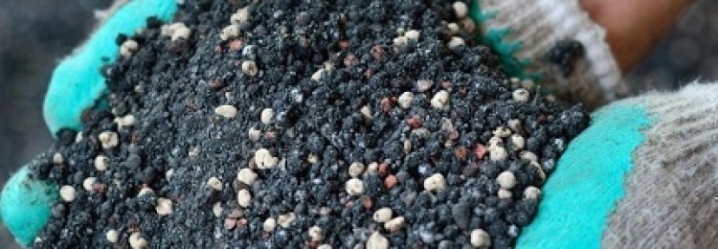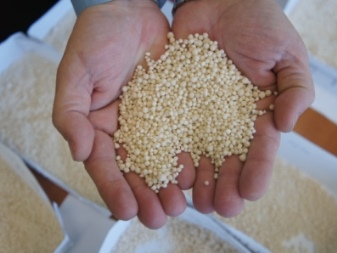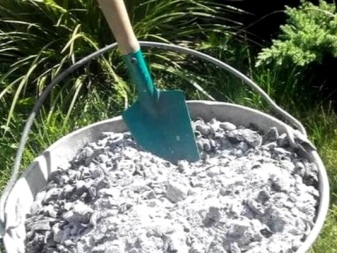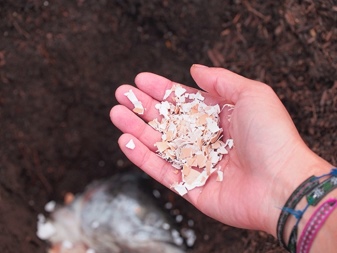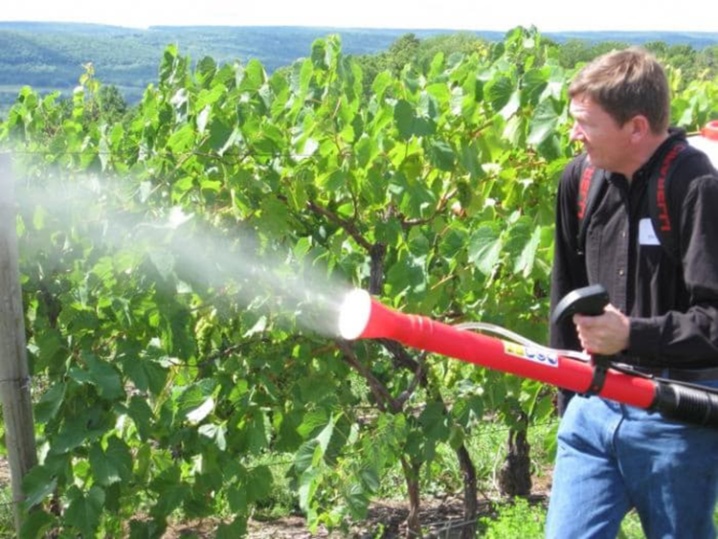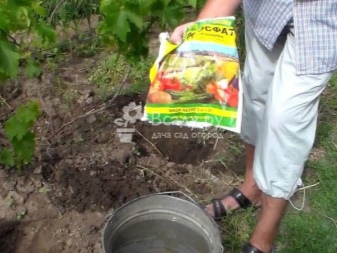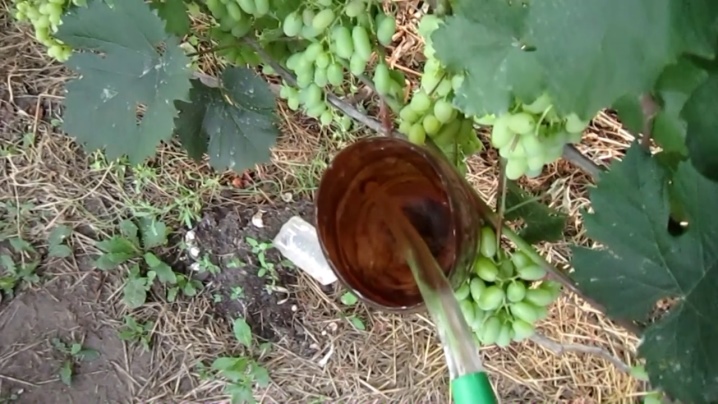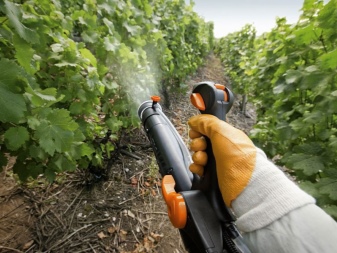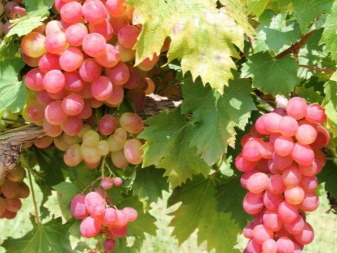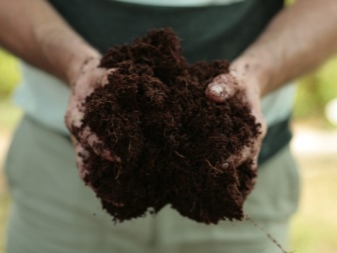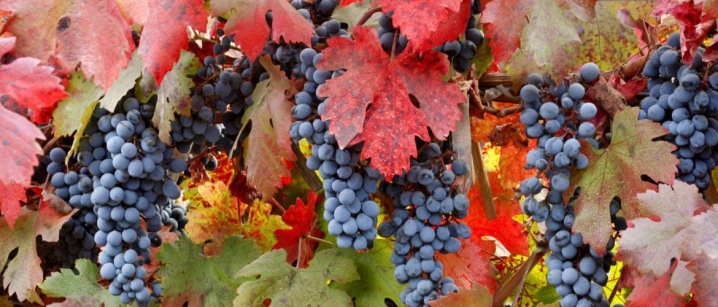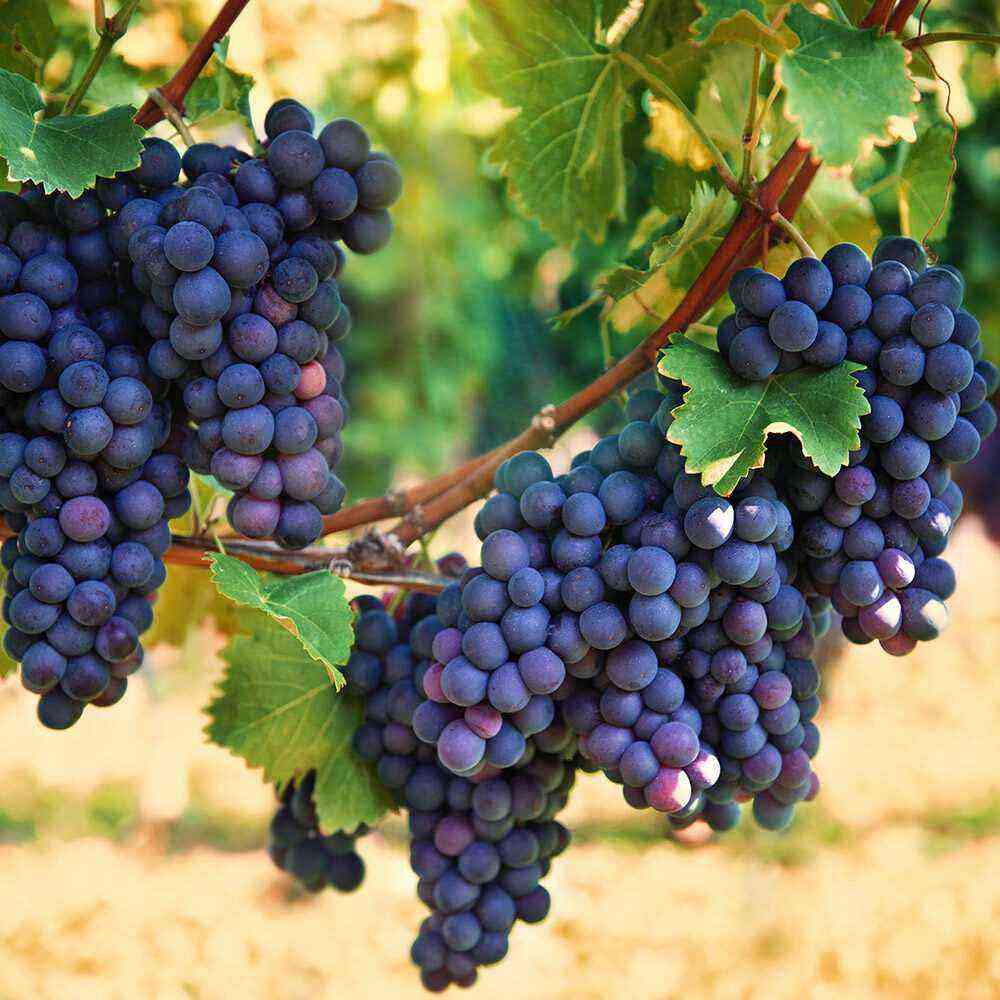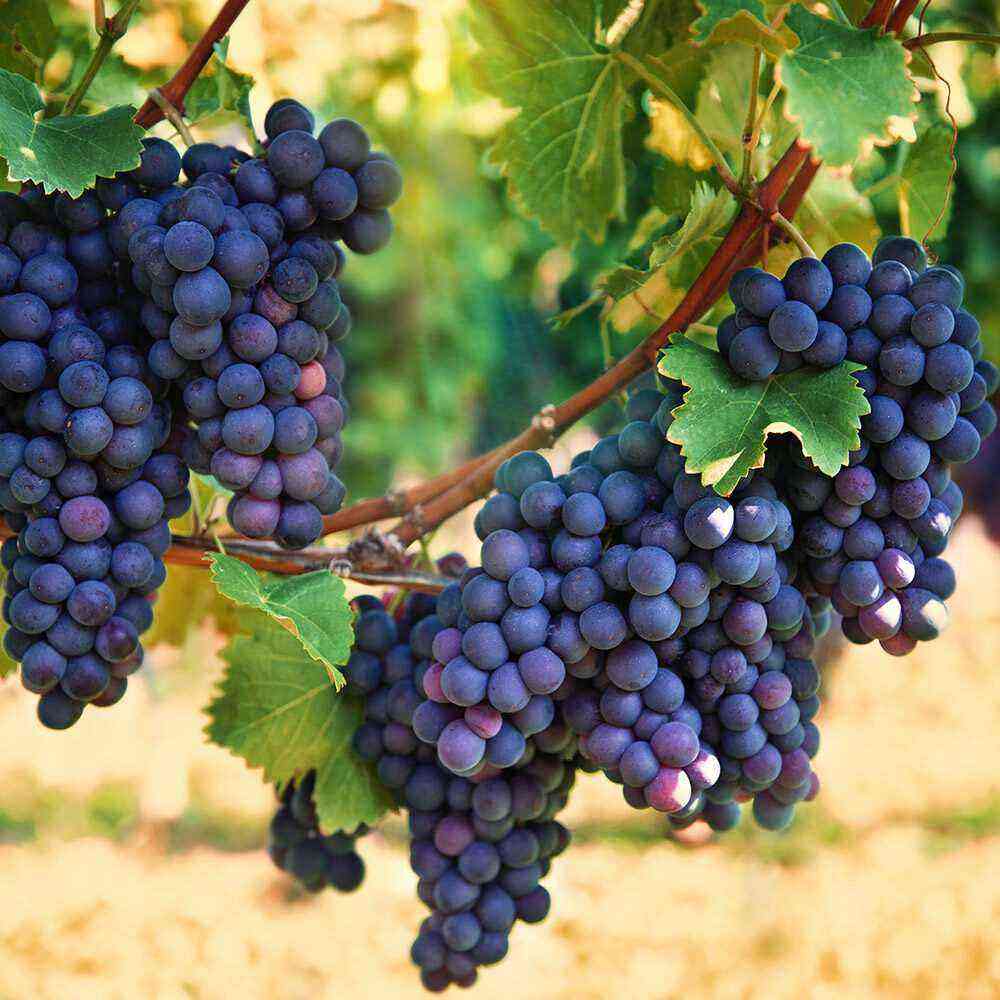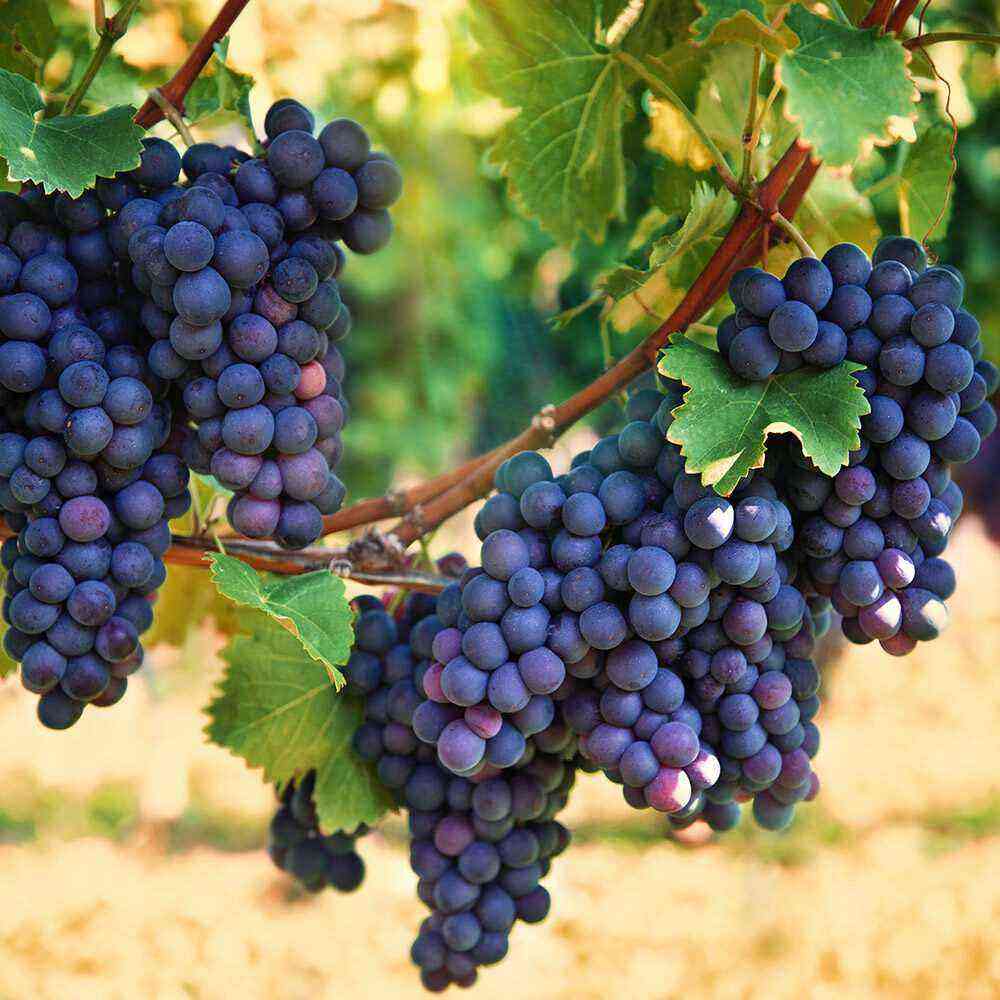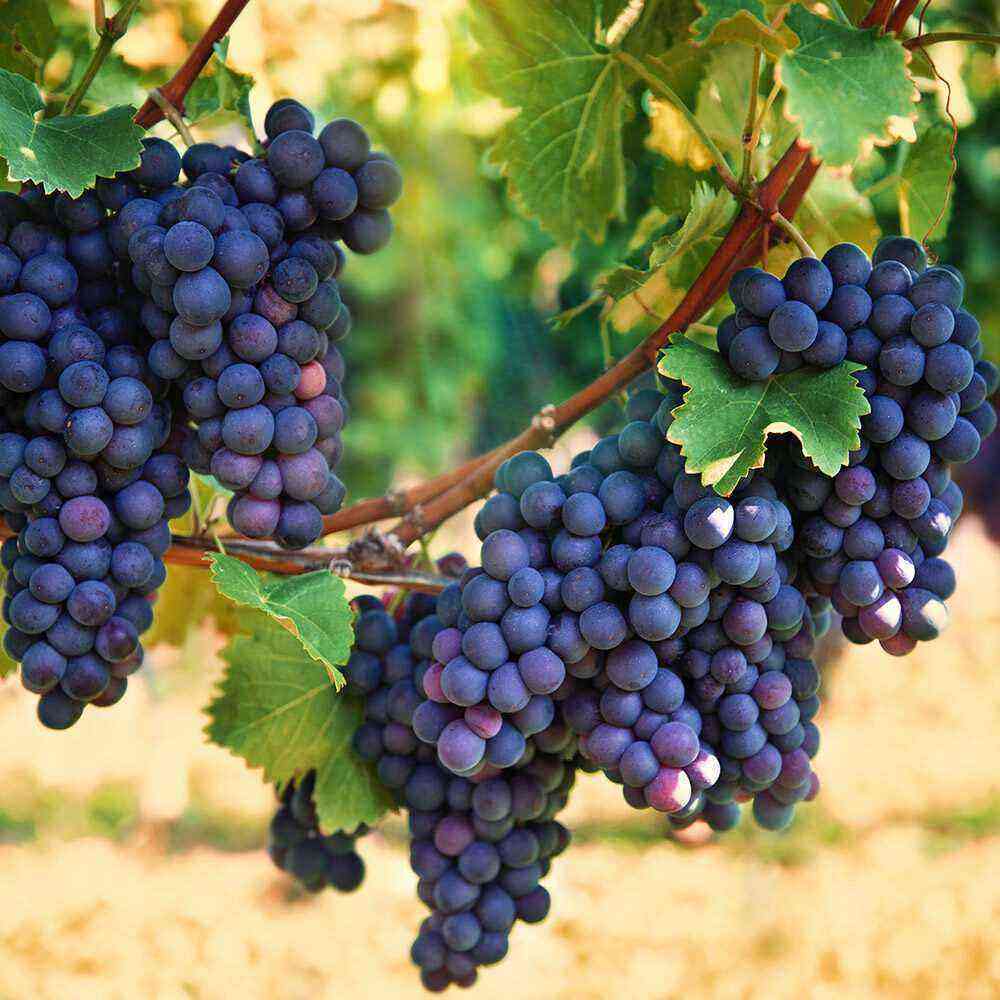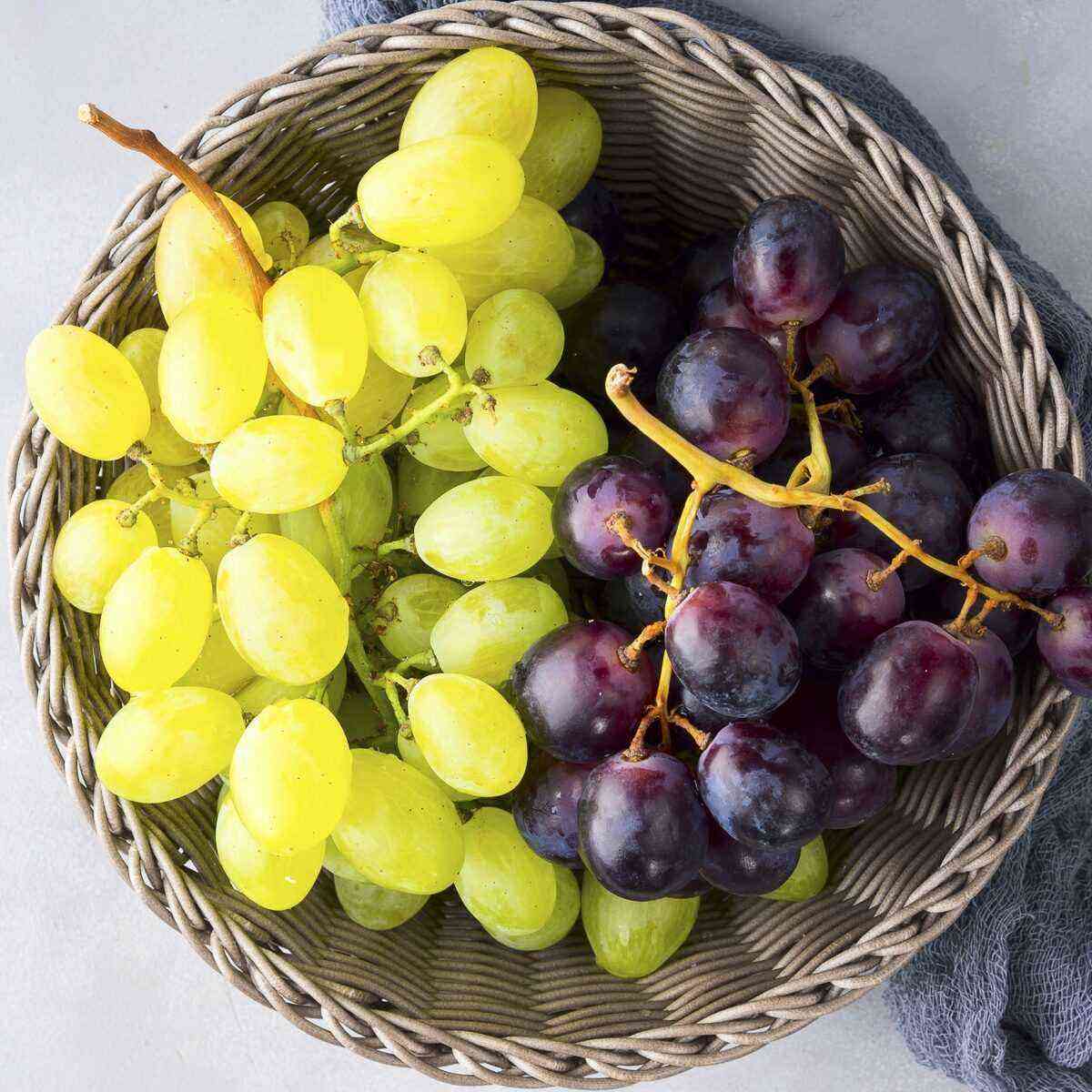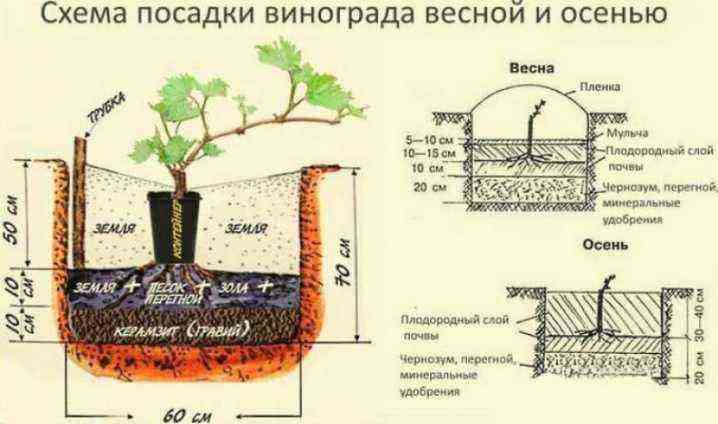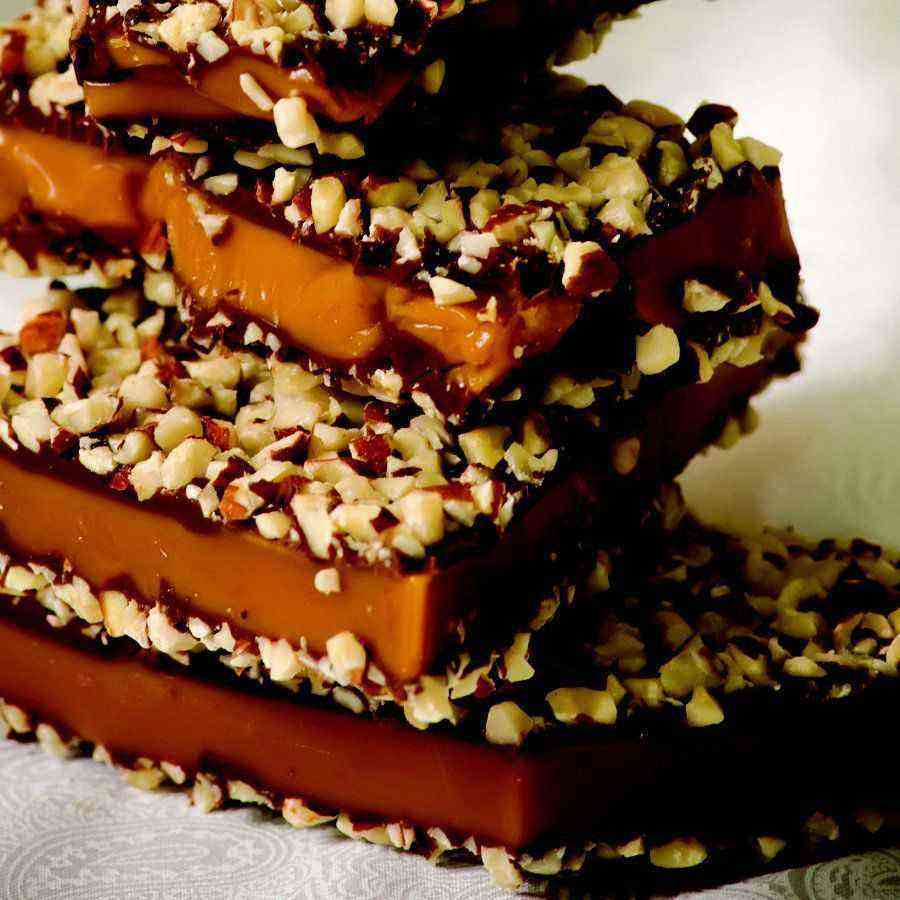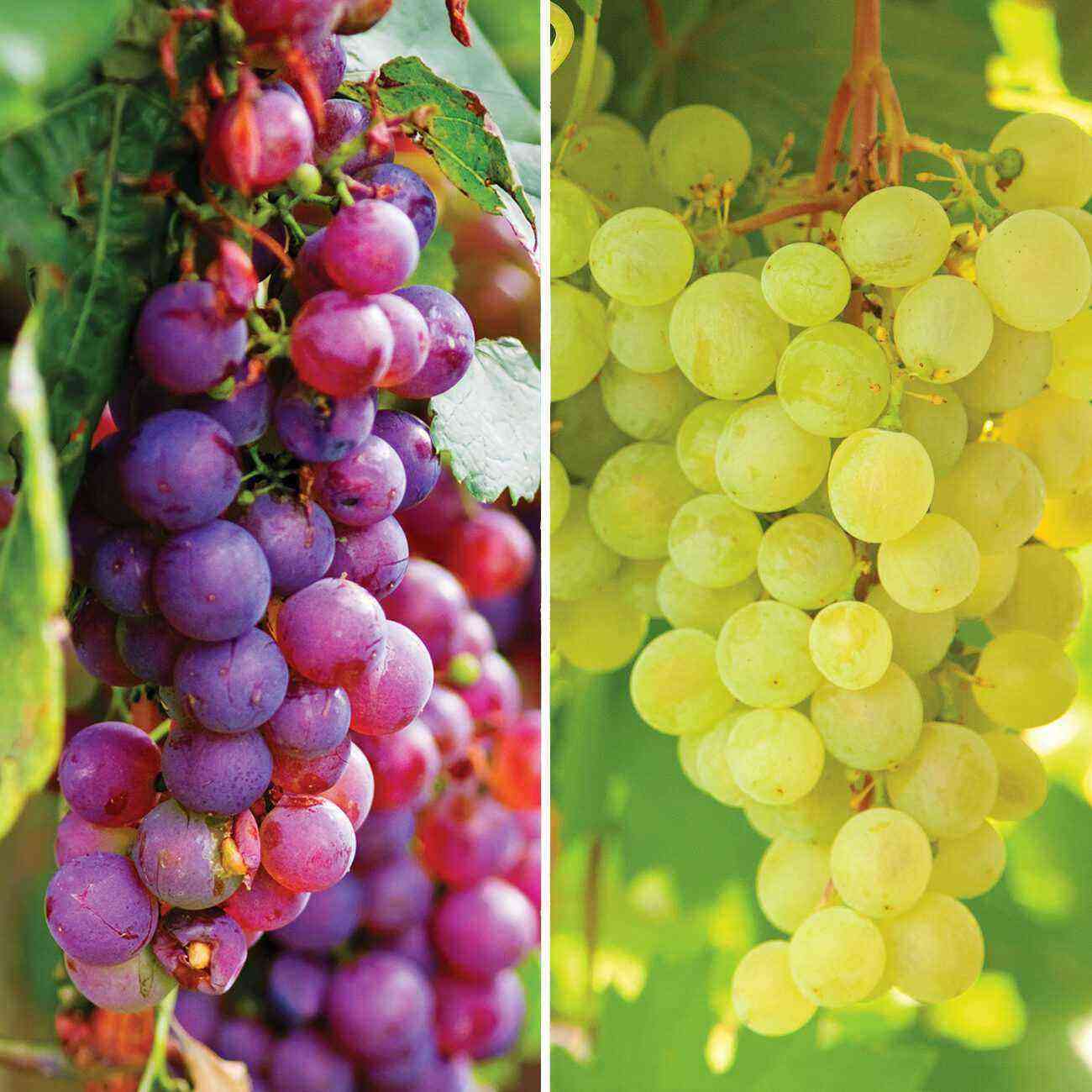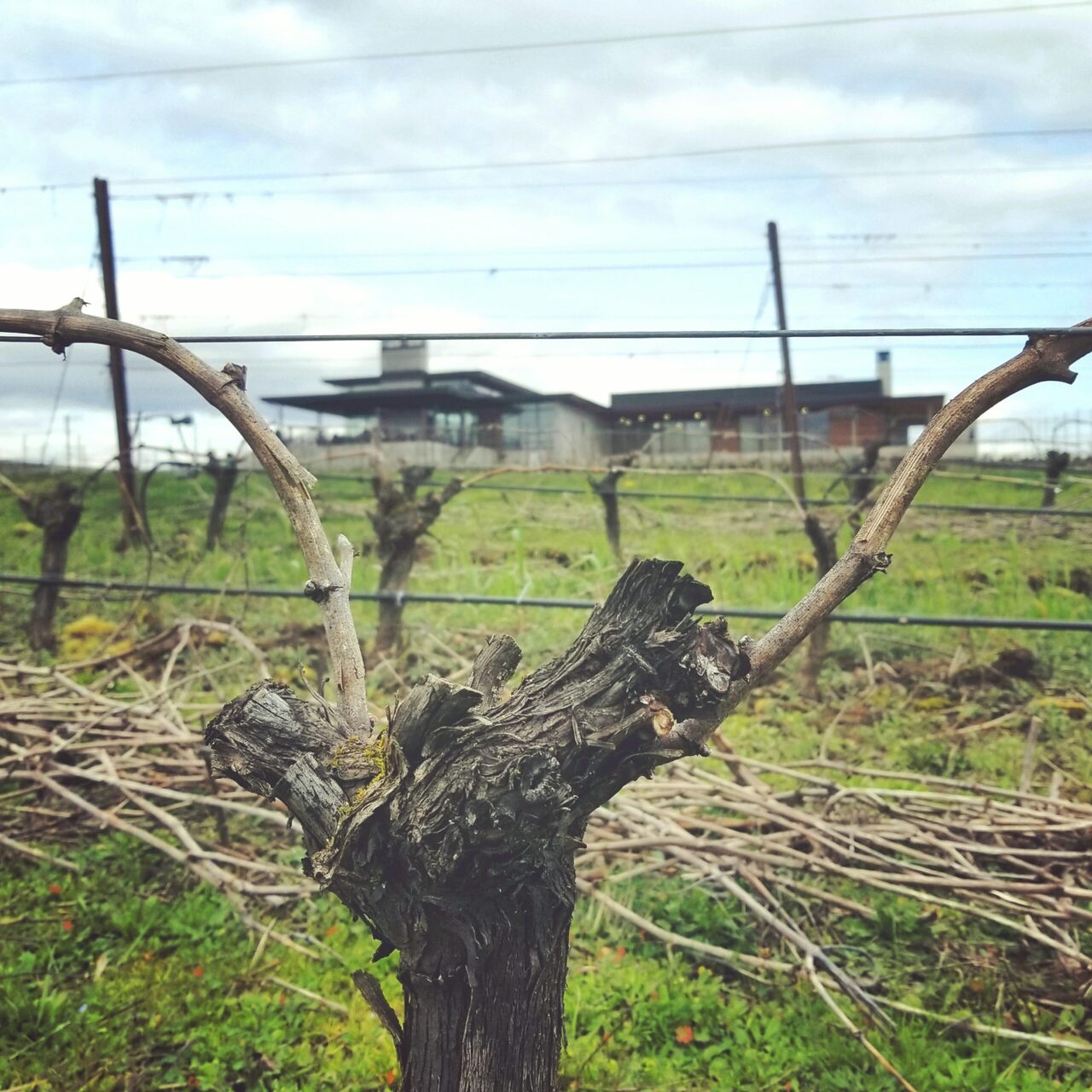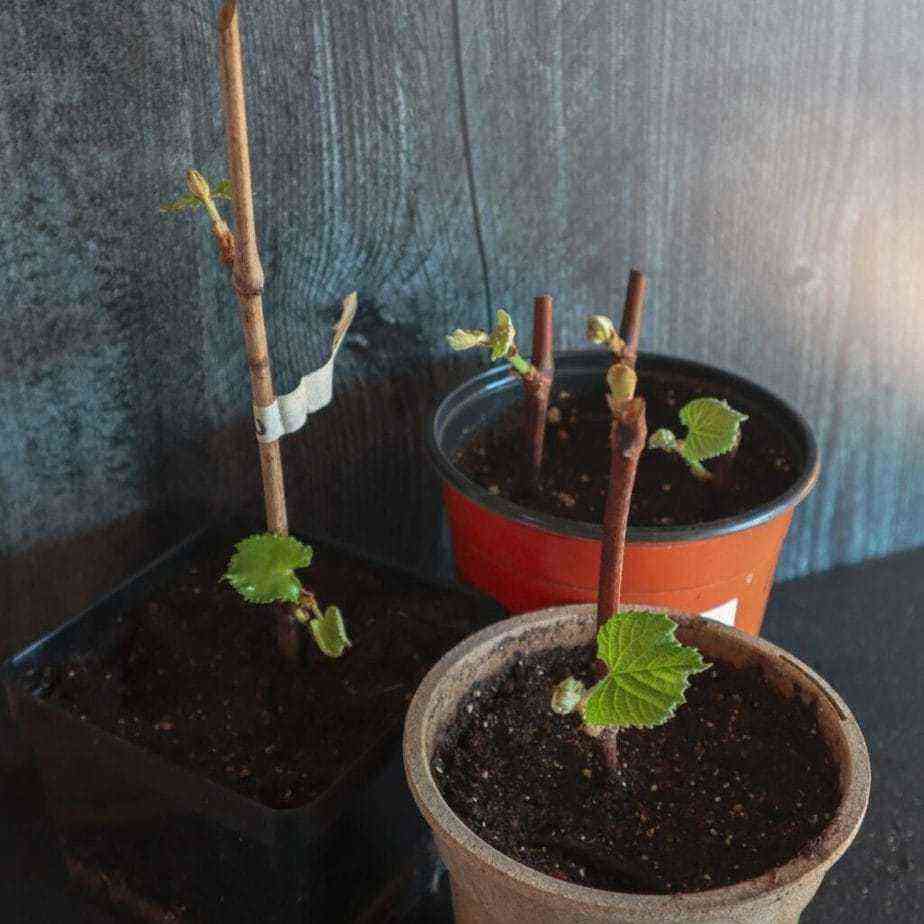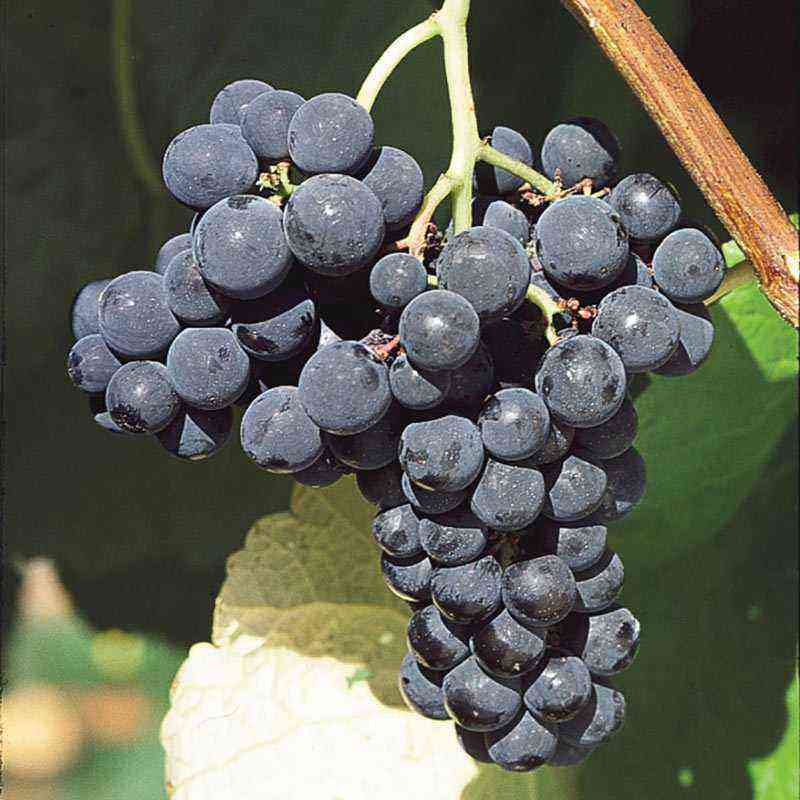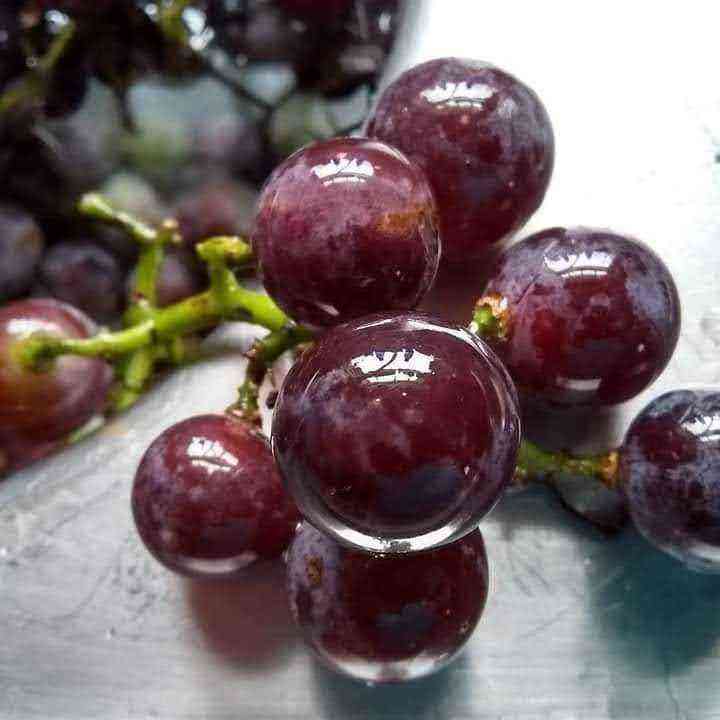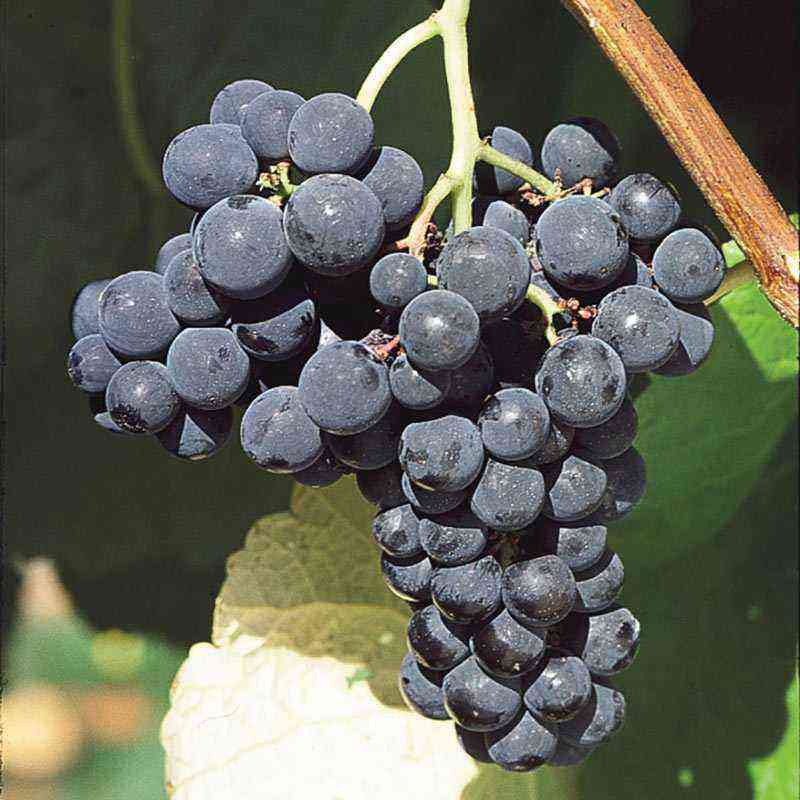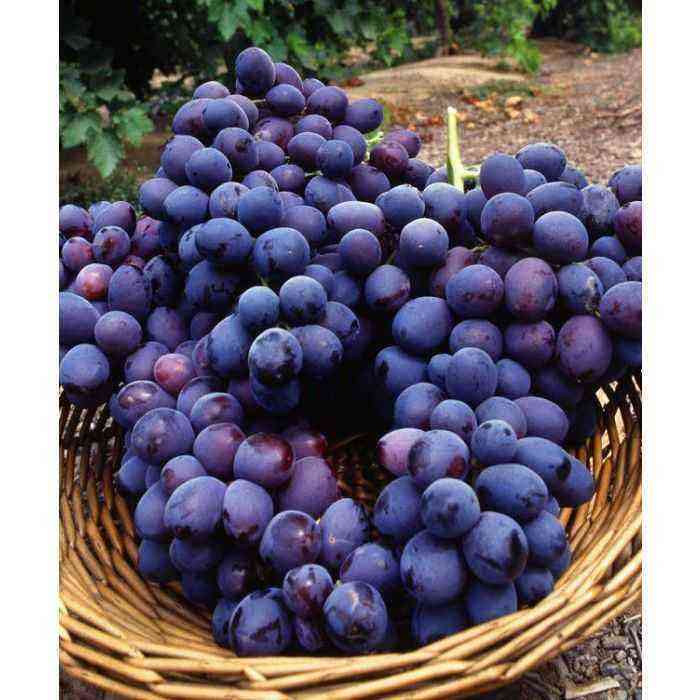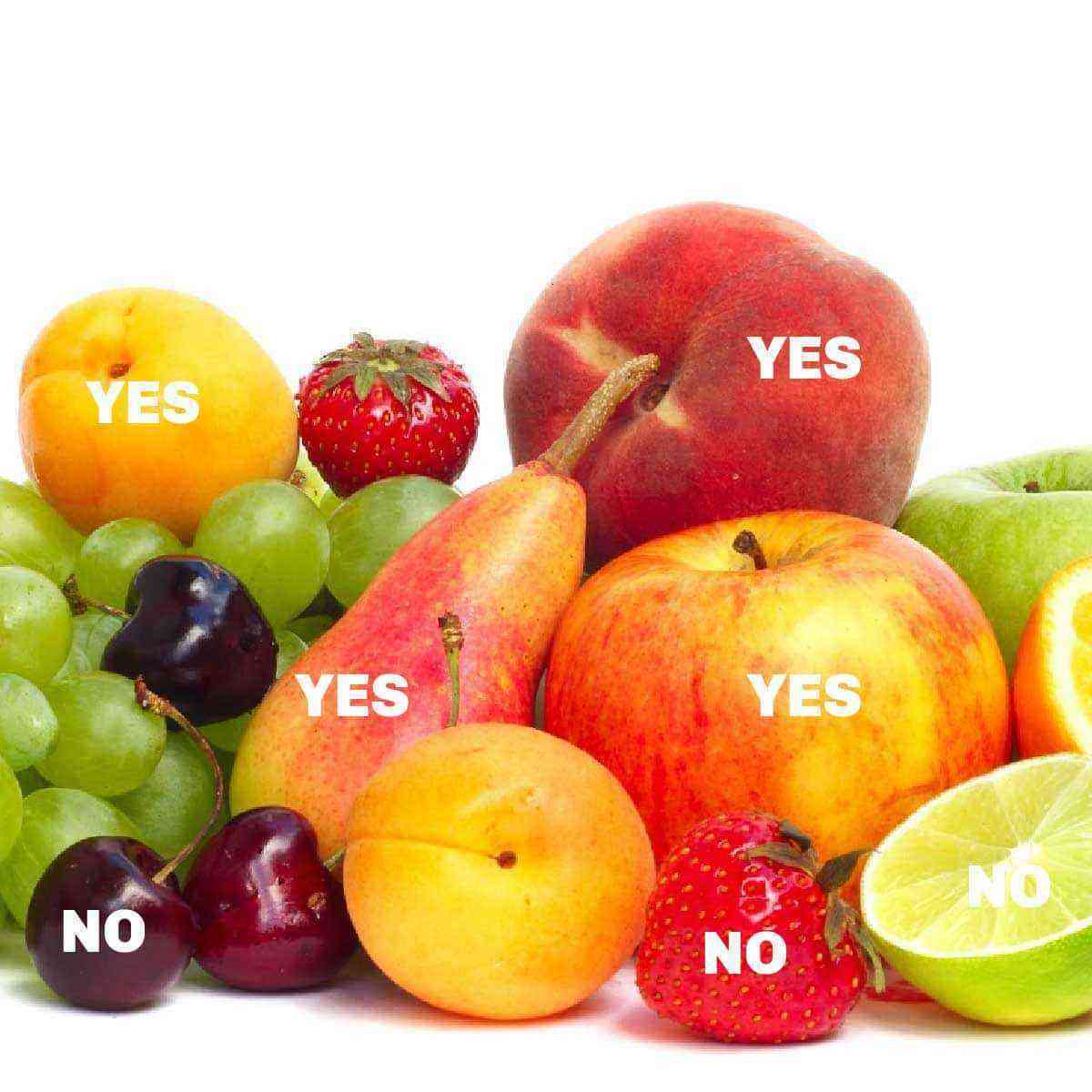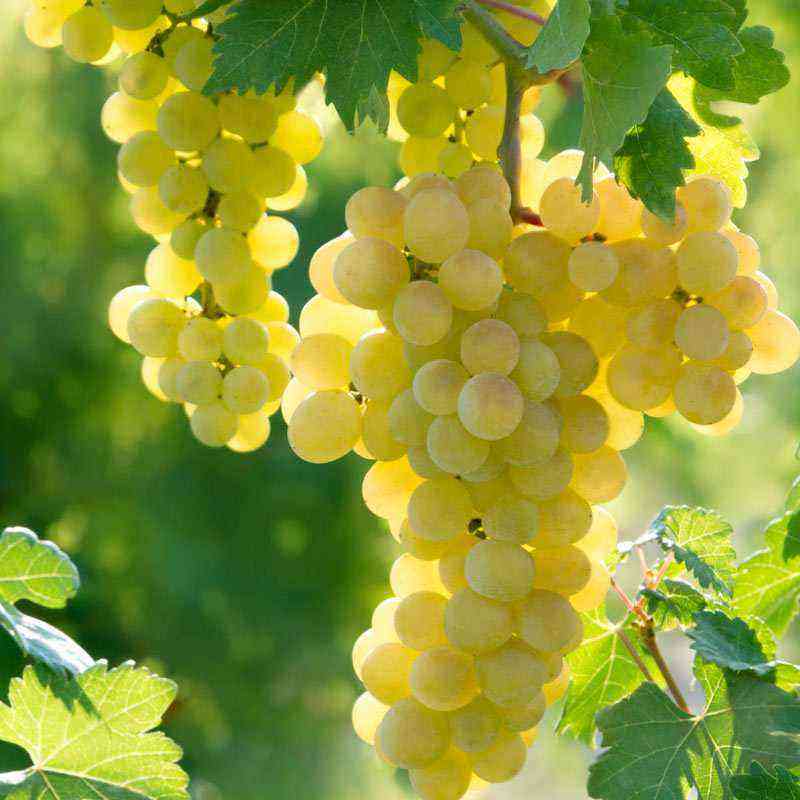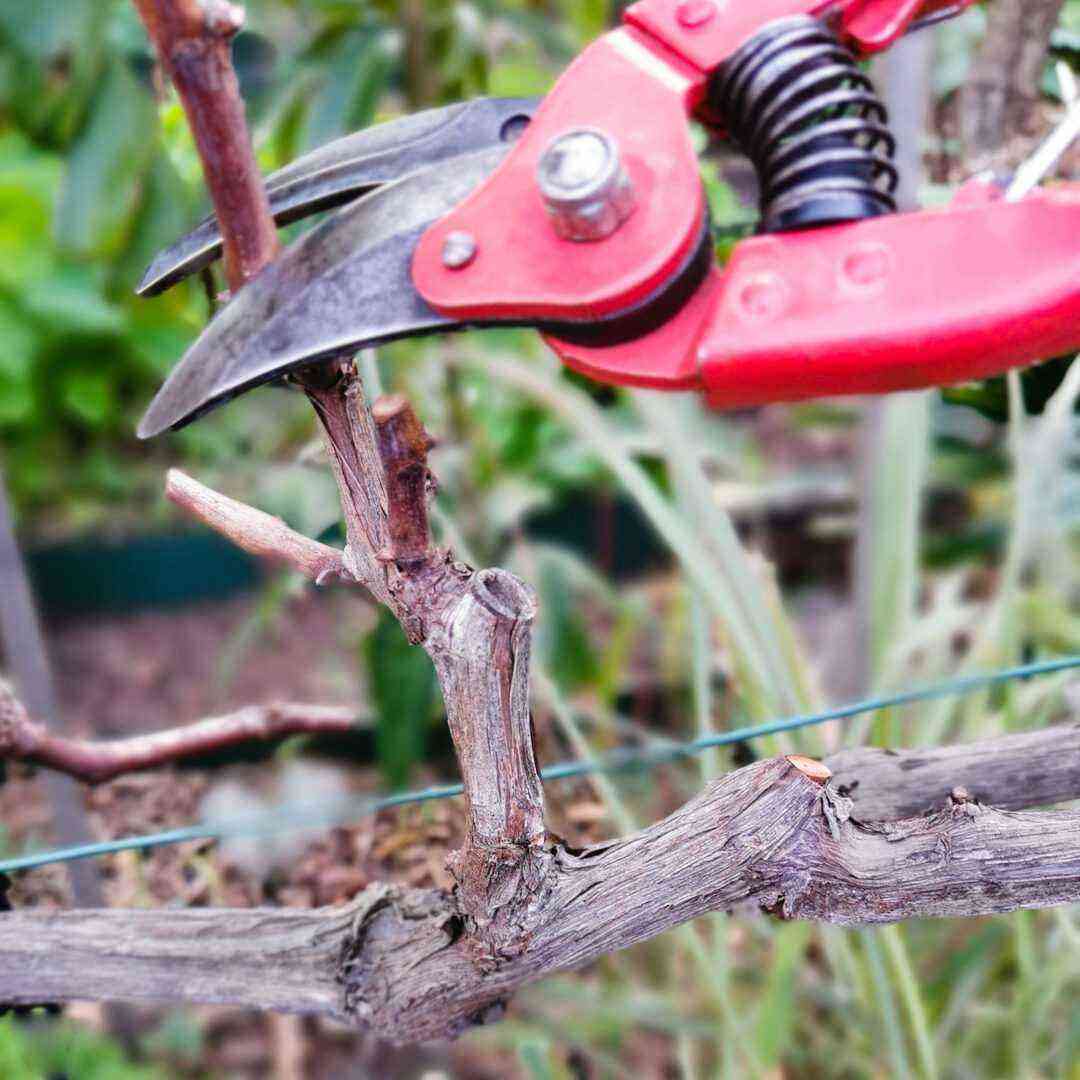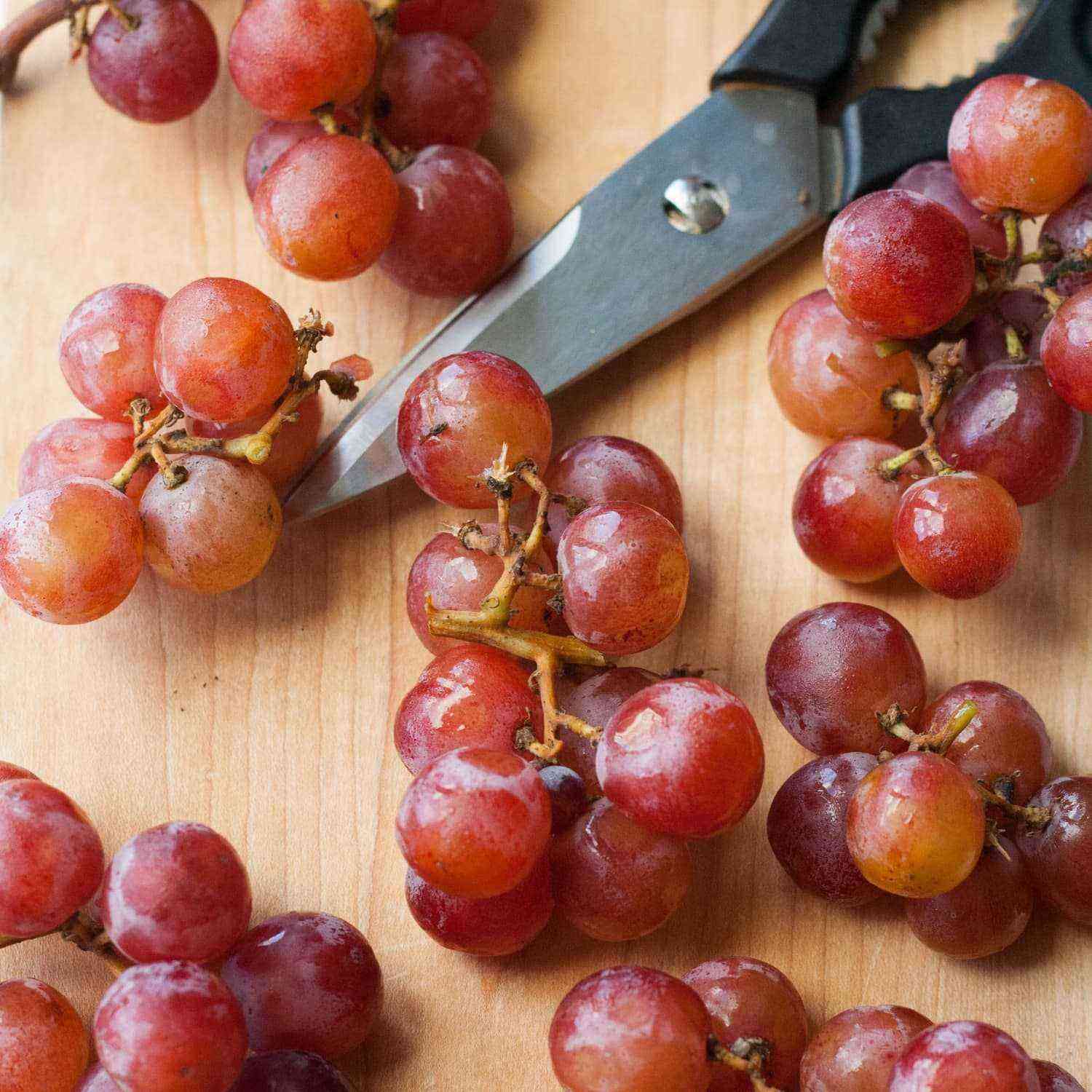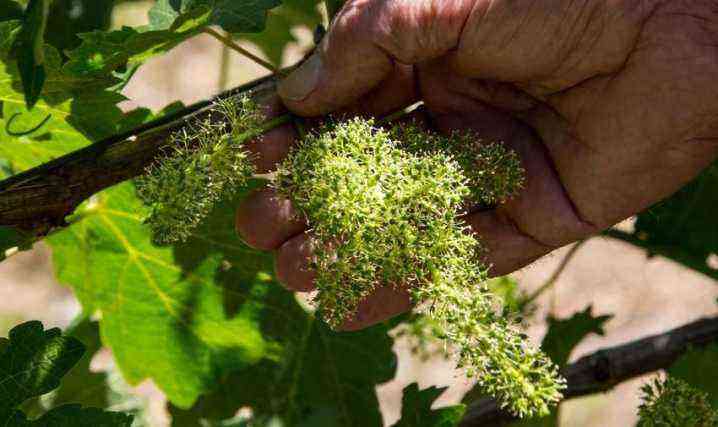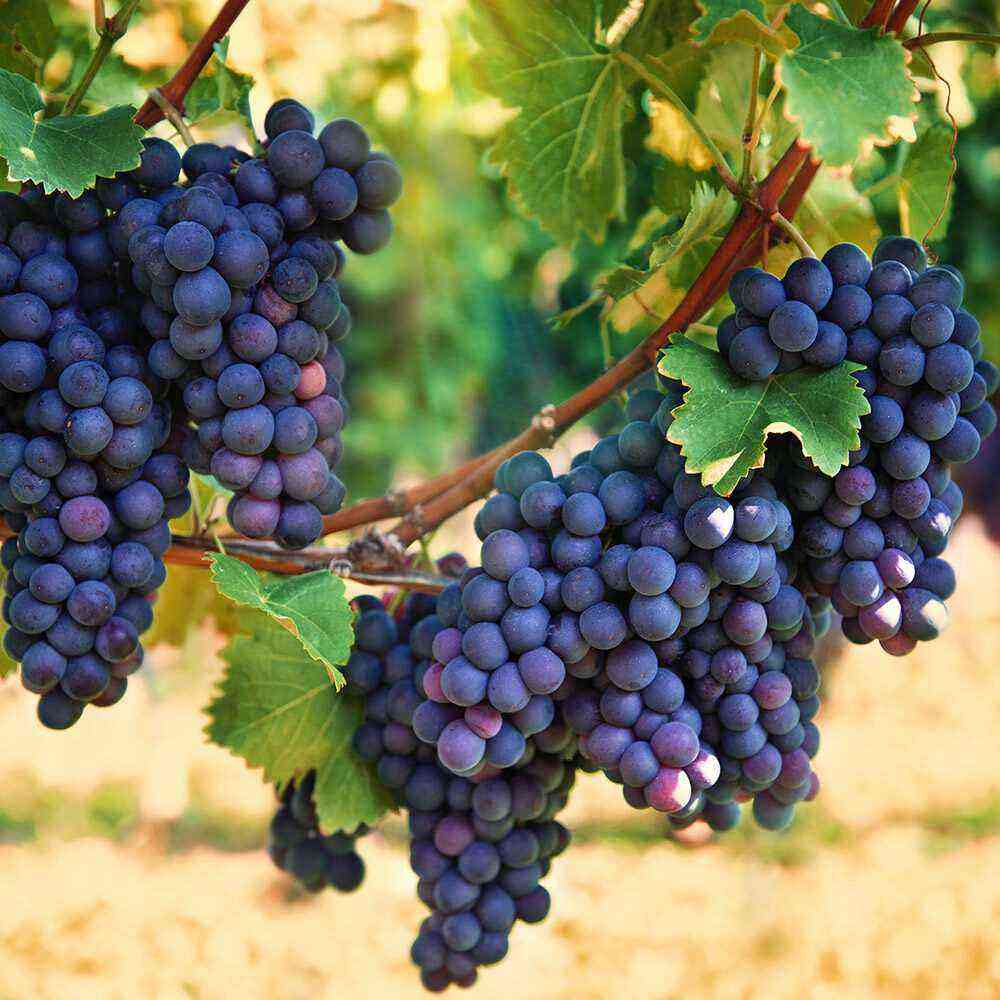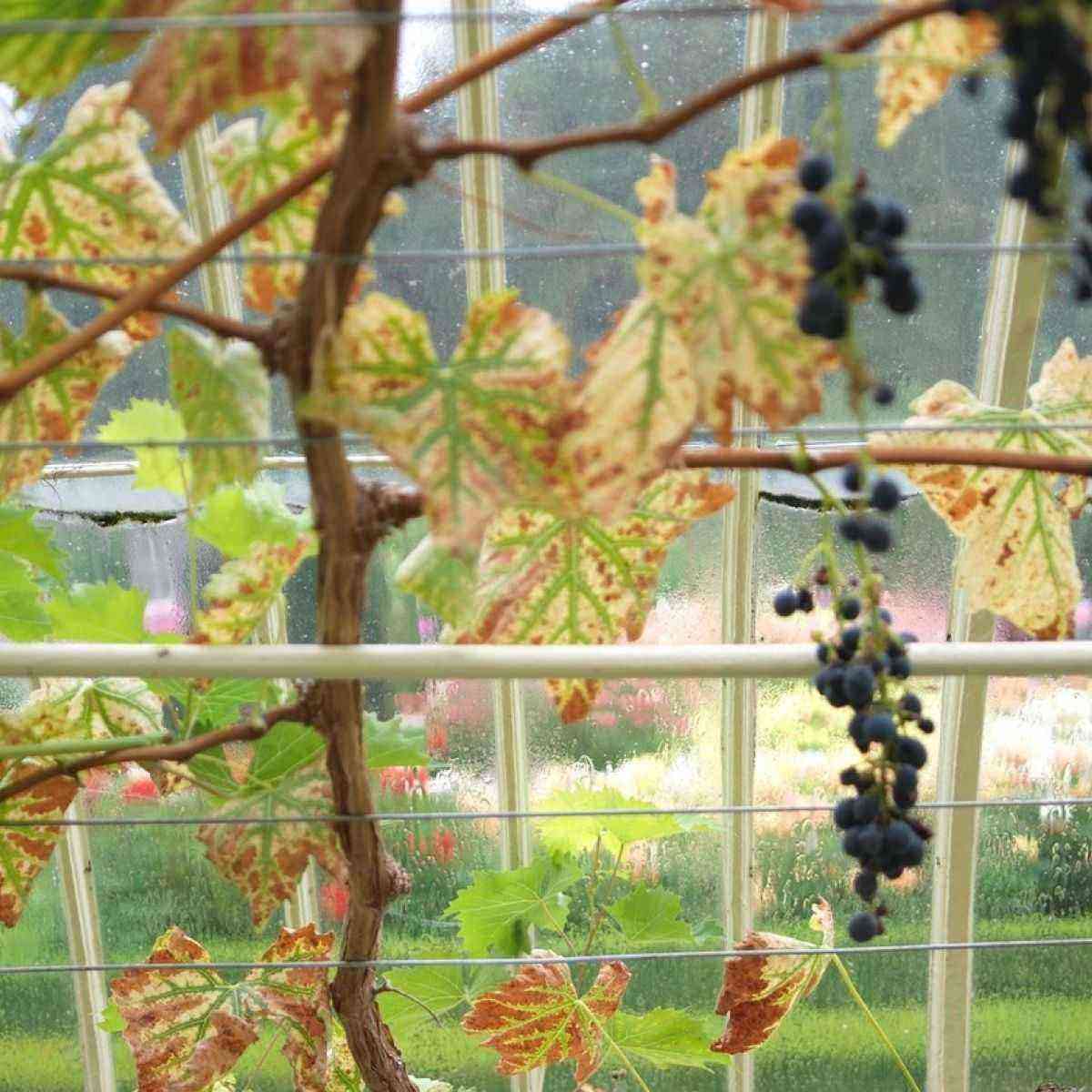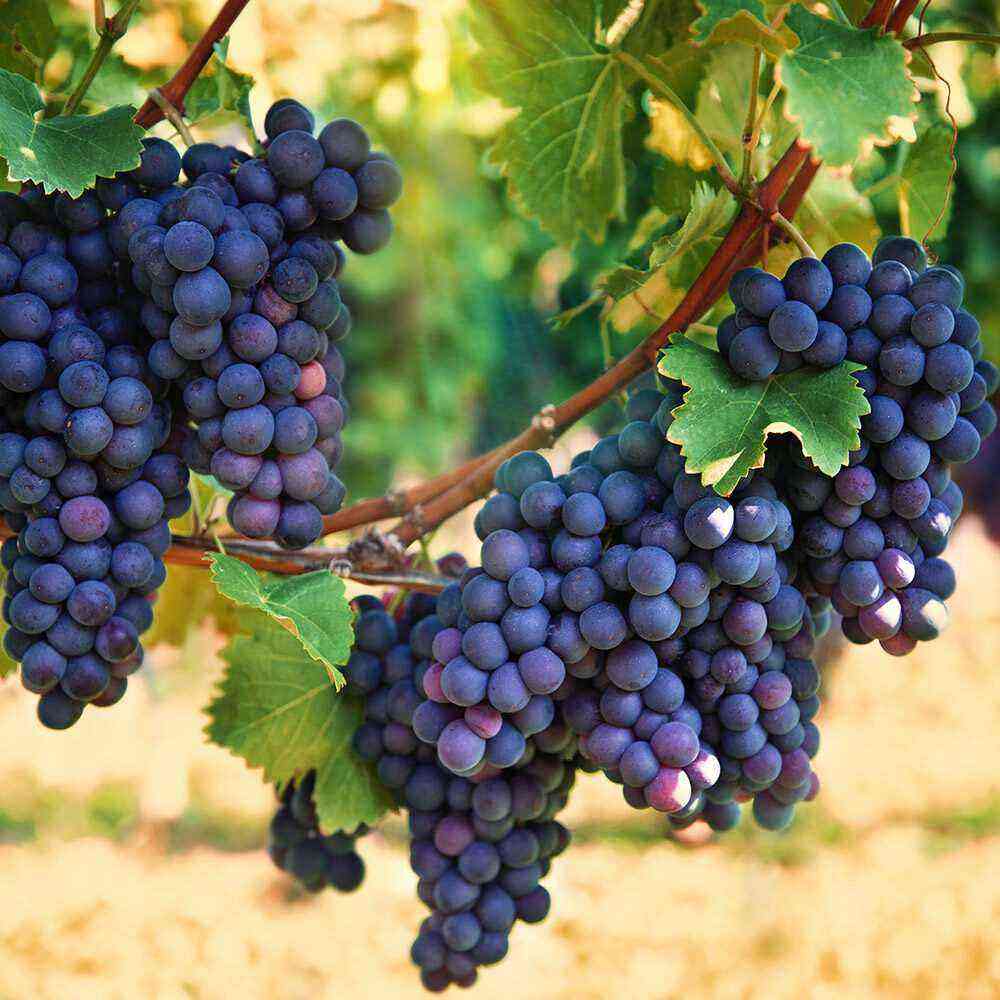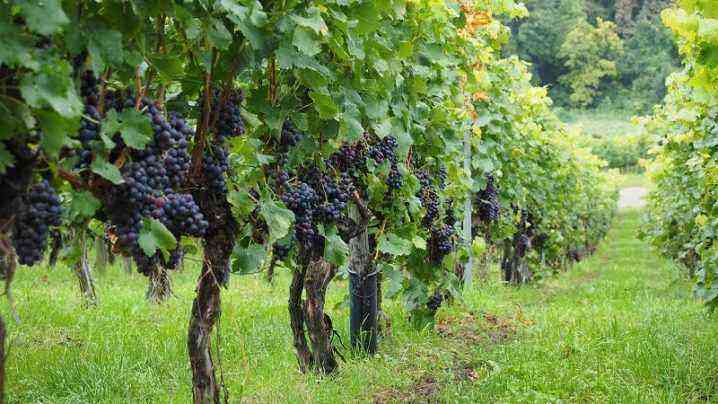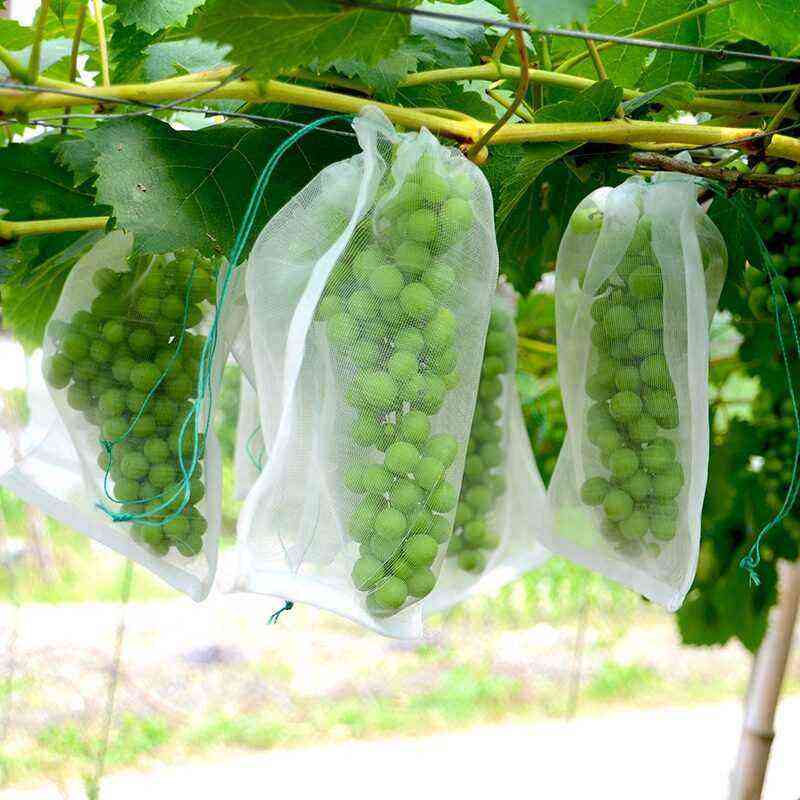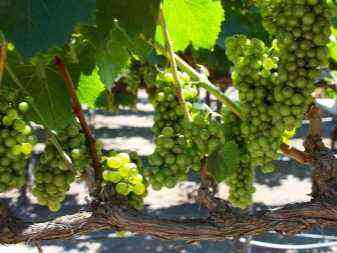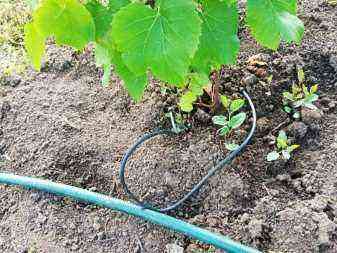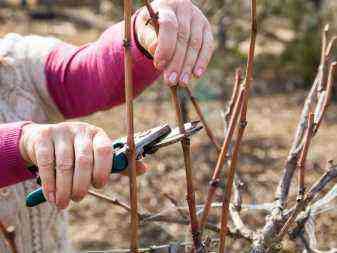To grow a strong and healthy grape bush with high yields, you need to regularly feed it with fertilizers. Top dressing for grapes is of great importance, this is one of the main points in the development of culture. If you approach it with skill, then you can grow grapes on almost any soil. If you fertilize the land well when planting, you can not think about top dressing for the next few years, but an adult grape bush definitely needs regular top dressing. Let us dwell in more detail on how to feed the grapes in different periods and how to properly fertilize.
What to fertilize?
Top dressing of grapes begins with planting, when mineral fertilizers and organic matter are laid in the pit so that the young plant has enough nutrition for several years. To do this, prepare a soil mixture from humus or overripe manure (say, 2 buckets), to which superphosphate (200 g) and potassium sulfate (150 g) are added. The last element can be replaced with a solution of ash (1 liter). This composition will be enough for several years, but already matured bushes will need good nutrition from inorganic (mineral) and organic fertilizers.
Minerals can consist of one element (nitrogen, phosphorus, potassium), can be of several (complex), for example, phosphorus-potassium fertilizers, as well as complex, consisting of concentrates of minerals and trace elements.
Let us consider in detail what exactly should be in the “menu” of grape culture from minerals.
- Potassium. This element is needed for the rapid growth of shoots, the timely ripening of the vine, the acceleration of the ripening process of berries, and the increase in their sugar content. In addition, without potassium, the grape bush will not winter well, and in the summer it will not survive in hot weather. If there is no potassium, we can say that the bush will disappear.
- Azophos. This complex consists of nitrogen, phosphorus, potassium. It gives the bush strength for good yields.
- Urea (urea). This nitrogen mineral fertilizer is needed for a grape bush to increase green mass, rapid growth of the vine and strengthen the clusters. It is recommended to apply nitrogen fertilizers at the beginning of the growing season.
- Bor. This element is needed for the formation of grape pollen. If there is no boron on the menu for this crop, you will not get high-quality fertilization of the ovaries. The simplest top dressing with boron – foliar, but done before flowering, can increase the yield by a quarter.
But the proportions of the use of boron and boron-containing substances should be carefully observed, since, as experienced growers say, an excess of boron causes even more harm to the culture than its deficiency. That is, use it strictly according to the instructions on the package.
Now consider what organic fertilizers should be on the grape menu. However, it is up to you to decide whether to feed the grape bushes with organic matter or not – this issue has both opponents and supporters. Some have found a happy medium and use organic matter as a “snack” between the main dressings. Consider what is referred to as organic fertilizers.
- Manure. It contains a lot of nitrogen, phosphorus, potassium, calcium – all that a culture needs for normal development. Mostly horse manure and mullein are used. Fertilize the soil around the bush with rotted manure or water it with manure solution around the roots – dilute the manure in water in a ratio of 1: 3, let it brew in a tightly closed container and then dilute 1 liter of the concentrate into 10 liters of water. It is desirable to combine such top dressing with watering.
- Bird droppings. It is laid in compost or made in an infusion following the example of manure and watered between the main meals. You should not interfere with infusions of manure and litter, you can alternate them or it is better to choose one thing so that there is no overdose.
- Wood ash. This component is considered an ideal top dressing for grapes, it contains a large percentage of calcium (40%), potassium (20%), as well as magnesium, phosphorus, silicon and other elements. Ash has the property of alkalizing, thus it improves the composition of the soil. It is indispensable for the cultivation of heavy soils – ash is added to such soil twice: in spring and autumn during digging, in other cases – only in the spring.
- Eggshell. This is also an organic fertilizer, consisting of 94% calcium carbonate. So collect eggshells, grind and use around the grape bush to deoxidize the soil. Consumption – 1 kg of egg powder is required per 0,5 square meter.
- Yeast. They are absolutely safe for humans, rich in proteins, carbohydrates, they contain B vitamins and other useful trace elements. An infusion for grape dressing is made from both dry yeast and raw bakery yeast. In the first case, 1 gram is dissolved in 1 liter of warm water, 1 teaspoon of granulated sugar is added and allowed to brew for several hours, after which the mixture is diluted with 10 liters of water and the grapes are fertilized. They do the same with live yeast, only 50 grams are taken. Another option is to make kvass from fresh yeast and breadcrumbs, and then dilute 1 liter of such kvass with 10 liters of water and feed the culture during irrigation.
- Another good natural fertilizer is herbal infusion. A third of the barrel is clogged with fresh vegetation, filled almost to the top with water and left to brew for 3-5 days. Sometimes the contents need to be stirred. Then the solution is filtered and, diluting the resulting concentrate in a ratio of 1:10 with water, the grapes are fed. With the remnants of the grass from the barrel, they proceed as follows: they are laid in compost, and after rotting they will again be useful.
How to properly feed?
During the growing season, grapes are fertilized at least 7 times, two of these dressings will be foliar, the remaining five – root. The nutritional pattern depends on the phases of development. For the introduction of basic nutrition (root dressings), there is the following schedule:
- in early spring – when the vine is still dormant, but the thermometer already shows +16 degrees; it is important not to miss this period;
- in late spring or early summer (May or early June) – this will definitely depend on the condition of the kidneys; it is important to fertilize before flowering;
- the end of flowering – the beginning of the formation of the first berries on the clusters;
- about 10 days or two weeks before harvest (August or September-October – it all depends on the grape variety);
- in late autumn – after the foliage has fallen; in fact, this will already become the preparation of the vine for wintering, after fertilization, its shelter for the winter will follow.
As you can see, almost all year round you need to take care of the nutrition of the grapes for the good development of the vine and increase fruiting.
Now let’s take a closer look at seasonal feeding.
In the spring
Spring tillage under the vineyard begins in early spring with the introduction of potash salt. It can also be a complex fertilizer consisting of ammonium nitrate or urea, superphosphate and potassium salt. Such top dressing will replenish the supply of minerals after a state of rest. The mineral solution is made in accordance with the instructions, and the top dressing itself is carried out as follows:
- if there are no drainage pipes, it is necessary to make small holes or trenches half a meter from the bush and pour fertilizer into them;
- cover pits or trenches with mowed grass.
At the beginning of spring, grapes are usually fed with nitrogen. To do this, you can use organic matter and fertilize the soil with chicken manure or wood ash. At the end of May, the procedure is repeated with the mineral composition, only with a lower concentration of fertilizer. This time it is carried out to improve pollination and the formation of large clusters.
Lettom
In summer, the vine begins to form fruits and especially needs high-quality care and top dressing. In order for the berries to ripen and gain juiciness, you need to constantly replenish the reserves of nutrients in the soil, otherwise the berries on the clusters will be sour and not poured enough. Here it is necessary to approach dry top dressing with caution, dry elements come in a concentrated form and can damage the roots, causing a burn. Before fertilizing, you need to study all the information on the application, which is placed on the package.
If the grapes grow on acidic soil, then fertilizer is applied, which contains a lot of calcium. Phosphorus is applied in June, and potassium is applied before harvesting in August. At this point, the soil is depleted, and potassium is simply necessary for the plant after the berries ripen. Growers with experience during this period prefer organic matter: they use ash, a liquid infusion of chicken manure or humus for feeding, water the bushes and a solution of rotted compost.
The culture responds positively to organic top dressing, since its nutrients are immediately absorbed by the plant, and not by the soil.
In the autumn
In early autumn, for better pouring of berries, top dressing with boric acid is used. This element increases the sweetness and size of the grapes, after such processing they do not burst and can be stored longer. With such top dressing, the yield increases by 20%.
The solution is prepared as follows: take 1 liter of warm water and dissolve 1/2 teaspoon of boric acid (powder) in it. The composition produces a spraying of the bush. In the first week of September, you can dig up the ground around the grape bushes and add compost or manure, or you can pour infusion of chicken manure. In November, it is already necessary to prepare the soil and bushes for winter, for this they apply phosphorus-potassium fertilizers, as well as magnesium. The granules are scattered under a bush, dug up, watered.
These elements strengthen the immunity of plants and help them endure the cold.
After harvesting
After fruiting, the bushes need to replenish nutrients. Potassium sulphate and superphosphate are suitable as fertilizers. Besides, every 3 years before sheltering for the winter in late autumn, it is recommended to make compost or humus for digging (1,5-2 buckets per sq.m).
Every season after harvesting, it is necessary to mulch the soil under the grapes. This is not a laborious task, it can be done quite quickly, and it will bring great benefits to the culture. Since October, liquid formulations have no longer been applied to the soil, since the root system may freeze due to autumn frosts, and mulching is safe. Mulch (in the form of humus, compost, peat) will slowly feed the roots and at the same time protect them from frost.
At least 2 times between the main nutrition, foliar top dressing should be carried out, preferably immediately before flowering and before the ovary. They are carried out in dry, calm weather late in the evening – so there is a chance that the solution will remain longer on the leaves.
With this method, a weakened bush can be urgently assisted in obtaining nutrients, therefore, even those growers who are skeptical about this method do not refuse it at all, but use it as an addition to the main diet.
Common mistakes
When feeding grapes, it is advisable to comply with all norms, dosages and rules, otherwise mistakes will lead to weakening of the bushes and crop failure. Let’s outline the most common mistakes.
- Increased attention to young bushes. In fact, when planting (if all the rules are followed), young seedlings receive the necessary elements for 2-3 years. Therefore, all efforts should be directed to an adult plant. Mature vines need more nutrition.
- Do not constantly fertilize only with complex compounds. At each stage of development, the vine needs different elements, and the composition of complex fertilizers is the same.
- No need to overfeed plants, due to an excess of trace elements, grapes can get sick, delay fruiting, and so on.
For information on how to feed the grapes, see the next video.


